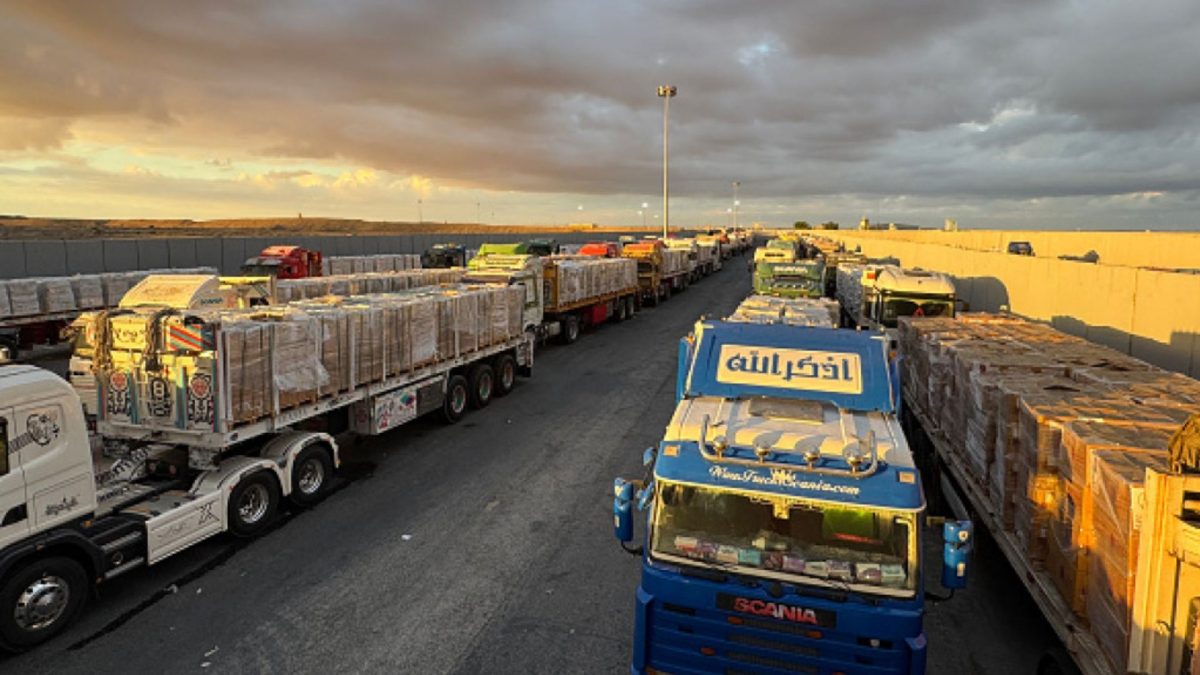Humanitarian aid has begun flowing into the Gaza Strip through the Karem Abu Salem and al-Awja border crossings, where supplies are being inspected before delivery.
This movement signals a big shift in aid logistics following the implementation of a US-led ceasefire agreement.
On Sunday morning, approximately 400 aid trucks were transferred from the Rafah crossing, which borders Egypt , to the two designated crossings for clearance. Reports indicated that 90 trucks crossed over to the inspection sites within the first hour alone.
Hamas official Osama Hamdan confirmed to AFP that a total of five crossings are expected to open for aid entry. Crucially, he added that the Rafah crossing, is scheduled to reopen next Wednesday for people to move in both directions between Gaza and Egypt.
Amid preparations for a Gaza peace summit in Egypt, a Hamas source close to the negotiating committee stated the group would not participate in post-war Gaza governance.
“For Hamas, the governance of the Gaza Strip is a closed issue. Hamas will not participate at all in the transitional phase, which means it has relinquished control of the Strip, but it remains a fundamental part of the Palestinian fabric,” the source told AFP.
This announcement aligns with key demands in US President Donald Trump’s 20-point plan to end the war, which calls for the disarmament of Hamas and its exclusion from the future administration of the territory.
Impact Shorts
More ShortsHowever, the question of disarmament remains a “red line” for the group. While Hamas reportedly agrees to a long-term truce during which its weapons would not be used, other officials had previously insisted that disarmament is “out of the question.”
Meanwhile, the controversial US- and Israeli-backed Gaza Humanitarian Foundation (GHF) has ceased operations, transferring all aid delivery responsibilities to the United Nations and its partner agencies.
Adding to the ongoing humanitarian crisis, Al Jazeera English reported the discovery of remnants of Israeli military munitions at sites where Palestinians were previously targeted while attempting to reach food supplies, particularly during the worst periods of the famine. Shell fragments and bullets were reportedly visible at these locations.
Hamas to free 20 hostages believed alive for nearly 2,000 Palestinian prisoners
Hamas official Osama Hamdan announced on Saturday that the militant group will begin releasing Israeli hostages held in the Gaza Strip on Monday morning.
The exchange, which constitutes the first phase of the signed ceasefire deal, involves Hamas freeing the captives, whom Israel believes include at least 20 still alive, in return for the release of nearly 2,000 Palestinian prisoners.
This development will precede a critical international summit in the Egyptian Red Sea resort of Sharm el-Sheikh, set for Monday afternoon. The summit, co-chaired by US President Donald Trump and Egyptian President Abdel Fattah al-Sisi and involving more than 20 nations, aims to “end the war in the Gaza Strip, enhance efforts to achieve peace and stability in the Middle East, and usher in a new era of regional security and stability,” according to the Egyptian presidency.
)